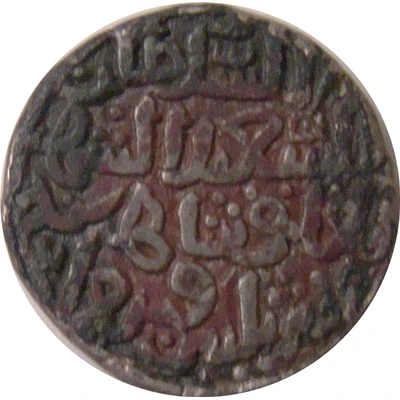


© NIRC
8 Gani - Muhammad bin Tughluq ND
| Copper | 3.42 g | 14 mm |
| Issuer | Sultanate of Delhi (Indian Sultanates) |
|---|---|
| Sultan | Muhammad bin Tughluq (1325-1351) |
| Type | Standard circulation coin |
| Years | 1329-1331 |
| Value | 8 Gani (1) |
| Currency | Tanka (1206-1526) |
| Composition | Copper |
| Weight | 3.42 g |
| Diameter | 14 mm |
| Thickness | 3 mm |
| Shape | Round (irregular, 32 rati) |
| Technique | Hammered (Wight varies 3.4-3.7g) |
| Orientation | Variable alignment ↺ |
| Demonetized | Yes |
| Updated | 2024-10-05 |
| Numista | N#171398 |
|---|---|
| Rarity index | 90% |
Reverse
Legend: Adl, Hast (8), Gani
Script: Arabic
Edge
Plain
Comment
HistoryMuhammad bin Tughluq (1290 – 20 March 1351), also named Jauna Khan as Crown Prince,[2] was the eighteenth Sultan of Delhi. He reigned from February 1325 until his death in 1351. Accounts describe him as an "inhuman eccentric" with bizarre character. He is also known for his wild policy swings. including shifting of the capital from Dehli to Daulatabad in 1327 CE and returning it to Dehli in 1335 CE.
Coinage
The coinage of Muhammad Bin Tughluq is the most complex and innovative of the entire Dehli series, struck at the largest number of mints. The coinage can be divided into 5 classes:
- struck in memory of his father and quoting his name only
- struck in his own name, normal issues
- struck in his own name, token issues (as with this coin)
- struck in the names of 'Abbasid caliphs
- joint issues with the Sultans of Bengal
Forced token issues
Tughluq's experiment with copper and brass token coinage took place between AH730 - 732. The basic unit was Tanka of 80 rati. There were half and quarter Tankas, and various Gani issues, but they did not bear any relationship to the weight of the Tanka.
Interesting fact
One interesting fact about the 8 Gani coin of Muhammad bin Tughluq is that it was issued during a time of significant economic and political change in the Sultanate of Delhi. The coin was introduced as part of a new currency system that was implemented by Muhammad bin Tughluq in 1329, which aimed to address issues of inflation and debasement of the currency that had been ongoing for several decades. The 8 Gani coin was made of copper and weighed 3.42 grams, and it was used alongside other denominations of coins made of silver and gold. Despite the efforts to stabilize the currency, the Sultanate of Delhi continued to face economic challenges, and the coinage system introduced by Muhammad bin Tughluq ultimately failed to achieve its intended goals.



